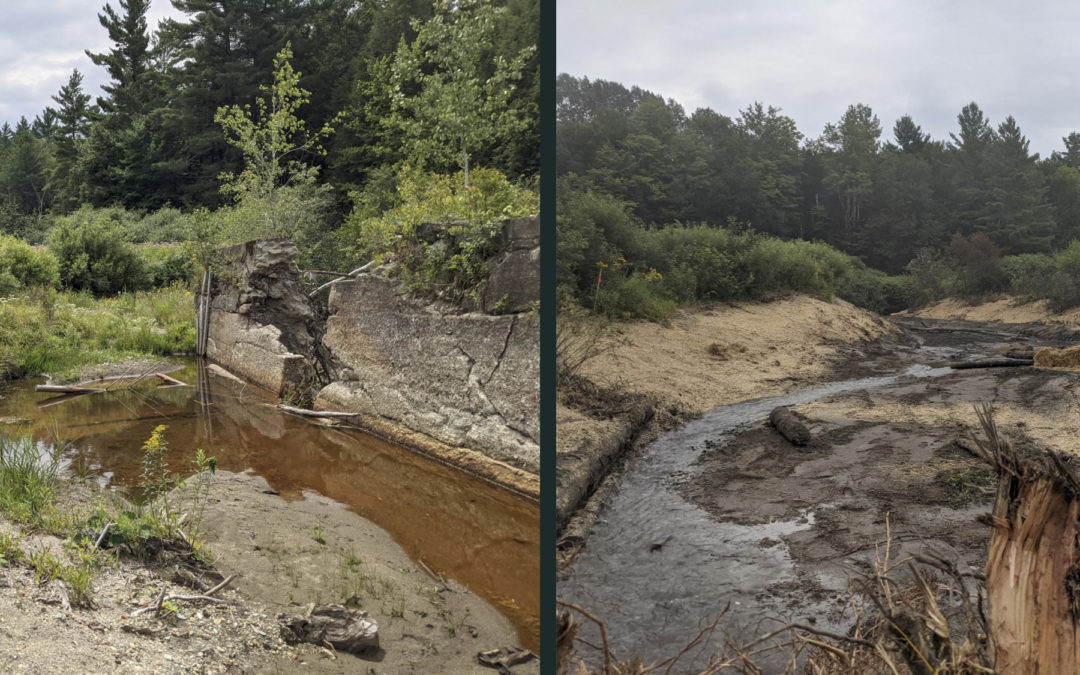In August 2021, the Johnsons Mill Dam was removed from the Bogue Branch in Bakersfield, VT. The project was managed from start to finish by the Franklin County Natural Resources Conservation District. This project was designed to restore natural stream flow and improve trout habitat by removing an aquatic organism passage barrier. The process of removing the dam started a few years ago with landowner outreach to various folks around Franklin County with dams on their property. During the Halloween storm of 2019, after initial engineering survey work had been completed, the dam unexpectedly breached and impounded sediment was sent flowing downstream without significant negative impacts. A post-breach survey was then completed and final designs for the structure removal and up-stream channel restoration began. Historical and cultural resources at the site were investigated and documented, and in early August, all of the pieces, and permits, were in place to get on site and remove the dam.
In seven quick days in mid-August, the contractor, Jeff Corey Excavating, completed the entire project. Their work included mobilizing to the site, stabilizing the streambanks by angling the once vertical and failing bank walls to a more stable 1:1 slope, transplanting native shrub willows from areas of bank disturbance, hammering away at the concrete and stone dam structure, seeding and mulching exposed slopes, and leaving the site with improved conditions. Sediment removed from the streambanks and some from the channel bed were sent to a neighboring farmer’s hay fields to cover up exposed ledge in a mutually beneficial arrangement for the stream and the farmer.
Later this fall, once willows go dormant, the reshaped streambanks will be planted with live willow stakes. This site is home to hundreds of native willow shrubs across a floodplain that is suspected to have a high water table which is keeping these and other riparian plants thriving hundreds of feet away from the stream channel and wetland areas. The stakes will be harvested from the site, trimmed up, and installed across the toe of the new streambanks. Waiting until the fall to plant is necessary due to willow dormancy and it is also helpful in that it allows time for the banks to adjust following the disruption of excavation and dam removal; the channel has time to meander, form its new path, and stabilize before planting.
Learn more about the Johnsons Mill Dam Removal and watch a time lapse video of the work here.
This project was funded in part by grants from the Vermont Fish and Wildlife Department and Vermont Department of Environmental Conservation. This project has been funded by an agreement awarded by the Great Lakes Fishery Commission to the New England Interstate Water Pollution Control Commission in partnership with the Lake Champlain Basin Program. This project has been funded wholly or in part by the United States Environmental Protection Agency under assistance agreement (LC00A00605) to NEIWPCC in partnership with the Lake Champlain Basin Program.







